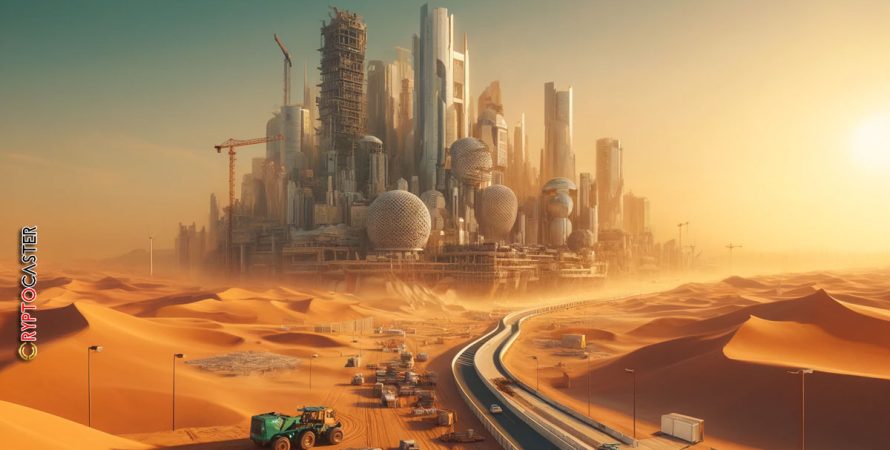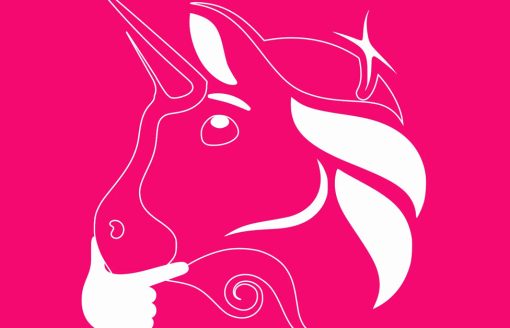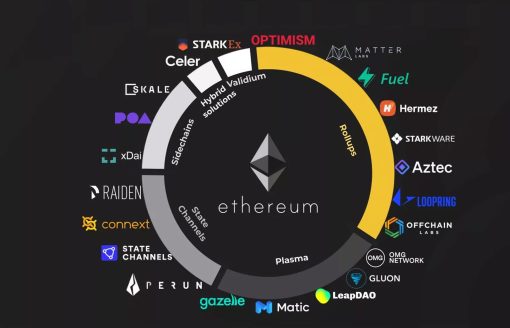As part of its massive NEOM project, Saudi Arabia is looking to reduce its plans for the 170-kilometer-long “The Line” metropolis. By the end of the decade, about 1.5 million people were expected to call it home. However, the planned town will no longer hold more than 300,000 residents. What went wrong is as follows.
Stay in the know on crypto by frequently visiting Crypto News Today
By 2030, Saudi Arabia had committed to building NEOM, the city of the future, for its citizens. But now that those plans have encountered a roadblock, the Kingdom is reducing their scope.
CryptoCaster Quick Check:
Saudi Arabia is reportedly reducing the scope of its ambitious plan for “The Line,” a futuristic city that will be housed inside two towering skyscrapers covered in mirrors. Additionally, according to a document seen by Bloomberg, at least one contractor has begun to fire some of the employees it employs on the project as a result of the pullback.
The Line Explained
The construction of The Line, a 170-kilometer-long linear city made up of two parallel, 500-meter-tall linear skyscrapers, was announced by Saudi Arabia in 2021. It is anticipated that the Line will be 33 times larger than New York City.
The Line, which is a component of the bold and futuristic NEOM project of the nation, was initially intended to house 1.5 million people by the end of the decade, with plans to eventually expand to a maximum population of nine million.
The entire city, which stretches from the Red City to Tabuk, would be devoid of cars, according to Saudi officials. Rather, a high-speed rail network would connect both ends.
The project’s concept photos featured a mirrored building slicing through the desert close to azure ocean waves, giving off a sci-fi vibe. According to estimates, it was to be 170 km long, 500 meters high, and only 200 meters wide.
Furthermore, The Line is intended to run entirely on renewable energy. In addition, it was marketed as a city where citizens could walk five minutes to get “all daily needs,” in addition to enjoying other amenities like outdoor skiing areas and “a high-speed rail with an end-to-end transit of 20 minutes.” Additionally, promotional materials hailed The Line as a solution to wasteful and uncontrolled urban sprawl, referring to the practice of “zero gravity urbanism,” which involves stacking residences, businesses, and parks atop one another. Also, the estimated cost of this ambitious project was more than $500 billion.
Bloomberg revealed a few days ago that the Kingdom had lowered its expectations for the project, now projecting that it will only house over 300,000 people by 2030. Furthermore, authorities anticipate finishing only 2.4 km of the 170 km project by 2030.
And as a result, some of the contractors that work on the site are being let go by one of them.
Mohammed Al Jadaan, the finance minister, made remarks on the same subject in December. “The economy will benefit from some projects being delayed, or rather extended.”
Reasons behind the scale back
Saudi Arabia is reducing its ambition over The Line for a variety of reasons.
The economics of it all appears to be the primary cause. Saudi Arabia’s sovereign wealth fund has not yet approved the entire Neom budget for 2024 due to diminishing cash reserves. Scholars who have studied it say that the Public Investment Fund, the wealth fund, may require hundreds of billions of dollars more from the Saudi government.
It’s mind-boggling how much work is being done here, as Tim Callen, a visiting fellow at the Arab Gulf States Institute think tank in Washington, stated to the Wall Street Journal. According to his estimates, the government might have to add an additional $270 billion to PIF by 2030.
Furthermore, oil revenues have stabilized amidst rising spending. According to IMF estimates, for the government’s budget to be balanced, oil prices would need to be above $86 per barrel in 2023 and $80 per barrel this year. For the past year, oil prices have been circling around $81.
A Bloomberg report claims that Prince Mohammed’s evolving vision for the project is another factor. Additionally, a number of project participants have described it as “untethered from reality” due to its constant changes.
For example, many had questioned the project’s veracity when it was announced and pictures were made public. “The 3D images presented are not classical 3D architecture images,” architect and urban planner Etienne Bou-Abdo told the Daily Mail, adding that the project’s designers “have rather called upon video game designers.”
He went on to say that “a lot of technology that we don’t have today” is included in the plan. In actuality, several of the main energy and transportation-related components of The Line are nonexistent at this time.
For environmentalists and human rights activists, the news of the project’s cancellation would be a relief, even though it might embarrass Saudi officials. This is due to the perception that The Line and NEOM have a detrimental effect on the environment.
According to environmentalists, the megaproject is among the top 15 urgent issues to be aware of in 2024. Millions of birds migrating between Europe and Africa would actually fall victim to a “death trap” created by the mirrored surfaces of the buildings, according to experts. The 500-meter-tall building that crosses Saudi Arabia with windmills atop is a major source of concern for birds flying into tall windows, as stated by Professor William Sutherland, director of research at Cambridge University’s zoology department, in an interview with The Times.
The study’s lead researcher, Sutherland, continued, “It’s also kind of like a mirror so you don’t really see it.” Thus, “there’s a serious risk that there could be lots of damage to migratory birds unless they do something about it.”
Some have said that the project is an attempt at “greenwashing,” which is the practice of making lofty environmental claims to divert attention from more pressing issues.
Not only would environmentalists be relieved, but so would human rights advocates. This is due to their claims that in order to make room for the project, the Saudi government forcibly uprooted members of the Howeitat tribe, who have lived for centuries in the Tabuk province in northwest Saudi Arabia. According to a report by the UK-based Alqst rights group, at least 47 members of the tribe have been arrested or detained for resisting eviction; five of them have received death sentences.![]()
We hope you appreciated this article. Before you move on, I was hoping you would consider taking the step of supporting CryptoCaster’s journalism.
From Elon Musk, Larry Fink(BlackRock) to Jamie Dimon(JP Morgan Chase) a number of billionaire owners have a powerful hold on so much of the hidden agendas’ which eludes the public concerning the paradigm shift juxtaposed by cryptocurrency and web3 emerging technologies. CryptoCaster is different. We have no billionaire owner or shareholders to consider. Our journalistic efforts are produced to serve the public interest in crypto development and institutional disruptions – not profit motives.
And we avoid the trap that befalls much U.S. and global media – the tendency, born of a desire to please all sides, to engage in false equivalence in the name of neutrality and retail consumer protection. While fairness and transparency dictates everything we do, we know there is a right and a wrong position in the fight against fiat global banking interest and monetary reconstruction precipitated by the emerging crypto ecology.
When we report on issues like the FTX, Binance and Ripple crisis, we’re not afraid to name who or what is uncovered. And as a crypto sentinel, we’re able to provide a fresh, outsider perspective on the global monetary disruption – one so often missing from the insular American and European media bubble.
Around the world, readers can access the CryptoCaster’s paywall-free journalism because of our unique reader-supported model. That’s because of people like you. Our readers keep us independent, beholden to no outside influence and accessible to everyone – whether they can afford to pay for news and information, or not.
We thankyou for the on-going support our readers have bestowed monetarily. If you have not considered supporting CryptoCaster, if you can, please consider supporting us just once from $1 or more of Bitcoin (satoshi) or Eth, and better yet, support us every month with a little more. Scroll further down this page to obtain CryptoCaster’s wallet addresses.
Thank you.
Kristin Steinbeck
Editor, CryptoCaster
Please Read Essential Disclaimer Information Here.
© 2024 Crypto Caster provides information. CryptoCaster.world does not provide investment advice. Do your research before taking a market position on the purchase of cryptocurrency and other asset classes. Past performance of any asset is not indicative of future results. All rights reserved.
Contribute to CryptoCaster℠ Via Metamask or favorite wallet. Send Coin/Token to Addresses Provided Below.
Thank you!
BTC – bc1qgdnd752esyl4jv6nhz3ypuzwa6wav9wuzaeg9g
ETH – 0x7D8D76E60bFF59c5295Aa1b39D651f6735D6413D
MATIC – 0x7D8D76E60bFF59c5295Aa1b39D651f6735D6413D
LITECOIN – ltc1qxsgp5fykl0007hnwgl93zr9vngwd2jxwlddvqt
CRYPTOCASTER HEATMAP







